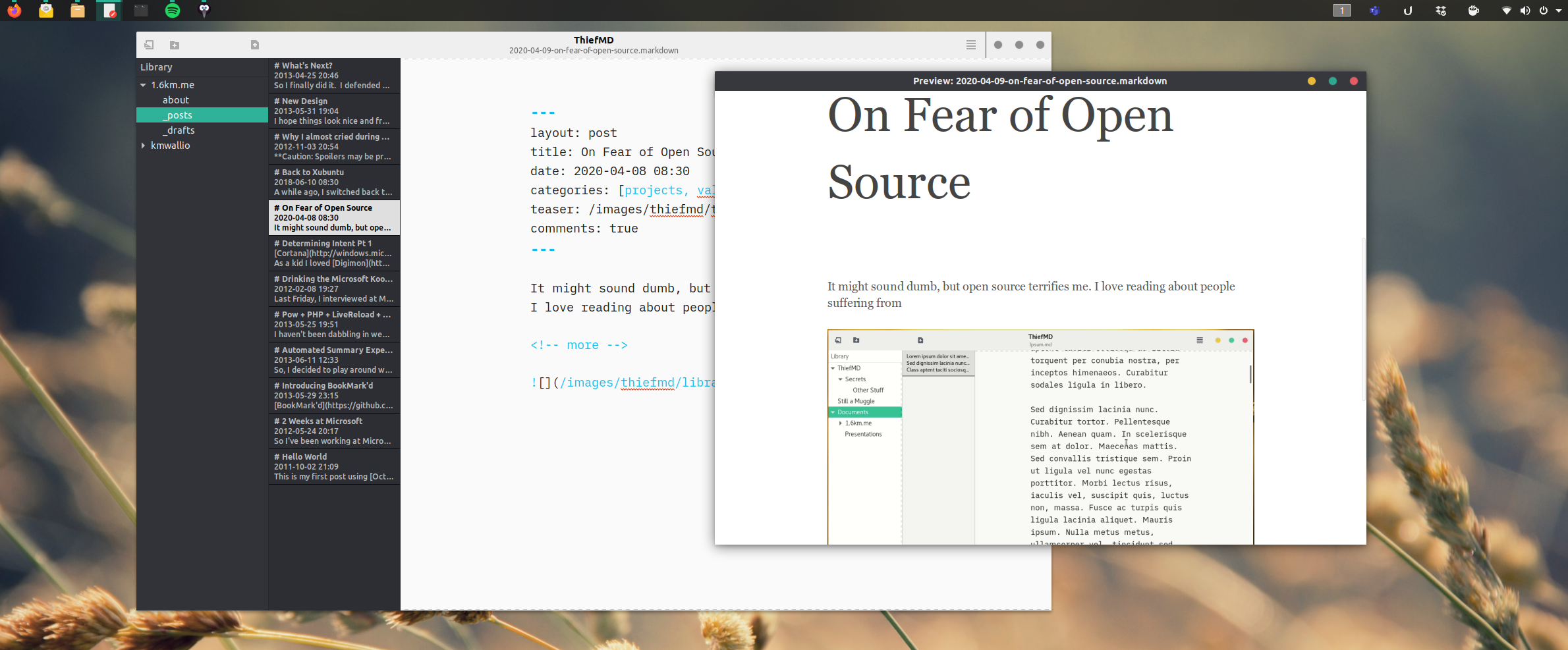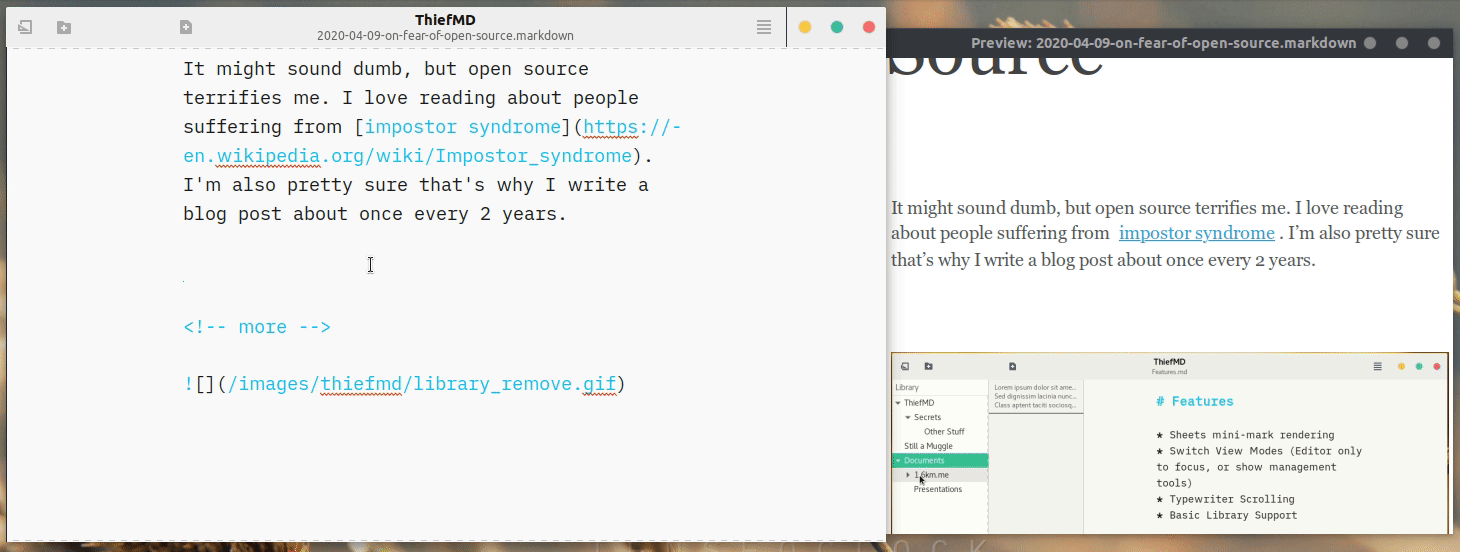
It might sound dumb, but open source terrifies me. I love reading about people suffering from impostor syndrome. I’m also pretty sure that’s why I write a blog post about once every 2 years.
With open source, I have no clue how the licenses work… I created a fork of an open source markdown editor, and took parts of other open source code to make it work how I want. School taught me how to put software together, but I don’t think it ever taught me how to deal with licenses and open source.

The original license is GPLv3. So most of that is okay, but for the preview, I am using MIT Licensed CSS. So while I try to figure out open source licensing and deal with my solitary confinement, let me tell you the story of the Markdown editor I wanted to keep just for myself.





